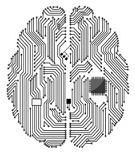Advertisment
ITS 2012 Report – Cortical reintegration in hand and face allotransplantation

by Maria Dalby – That the human brain is capable of reorganising itself following the loss of a limb is well known – the part of the motor cortex that used to control the lost limb is instead employed in controlling other motor functions such as the face or other limbs.1 However, the plasticity of the brain is even greater than this – after transplantation, the motor cortex will revert to its original structure to allow the transplanted limb to function almost normally. A team of neuroscientists at the University of Lyon in France have studied this reorganisation of the brain following transplantation in detail; Dr Michel Desmurget presented some of their findings.
In a study published in 2001, the Lyon team used functional magnetic resonance imaging (fMRI) to study the cortex of a patient with both hands amputated who received a bilateral transplantation. The fMRI technique allows the central sulcus, the site of the central sensorimotor region of the cortex, to be ‘unfolded’ and imaged in full. The images showed that within six months after the transplantation, the areas that control the hands had regained its normal position in the primary motor cortex, and remained stable there for the follow-up assessments at 12 and 18 months.2 In a more recent study, two bilateral hand transplant recipients were studied using transcranial magnetic stimulation (TMS) which is a useful tool for visualising reorganisation of efferent signals as it involves administering a weak electric impulse and thereby create a ‘twitch’ in a specific muscle. With TMS it was possible to follow the cortical plasticity over time and to correlate the reorganisation of the primary motor cortex with the occurrence of phantom sensation.3 Dr Desmurget and colleagues have also recently completed a study showing that a similar pattern of reorganisation can be seen following face transplantation and the results of this work will be available shortly.
Michel Desmurget, University of Lyon, France
References:
- Ramachandran VS, Rogers-Ramachandran D. Arch Neurol 2000; 57(3): 317-320
- Giraux P, et al. Nat Neurosci 2001; 4 (7): 691-692
- Vargas CD, et al. Proc Natl Acad Sci USA 2009; 106 (17): 7197-7202





